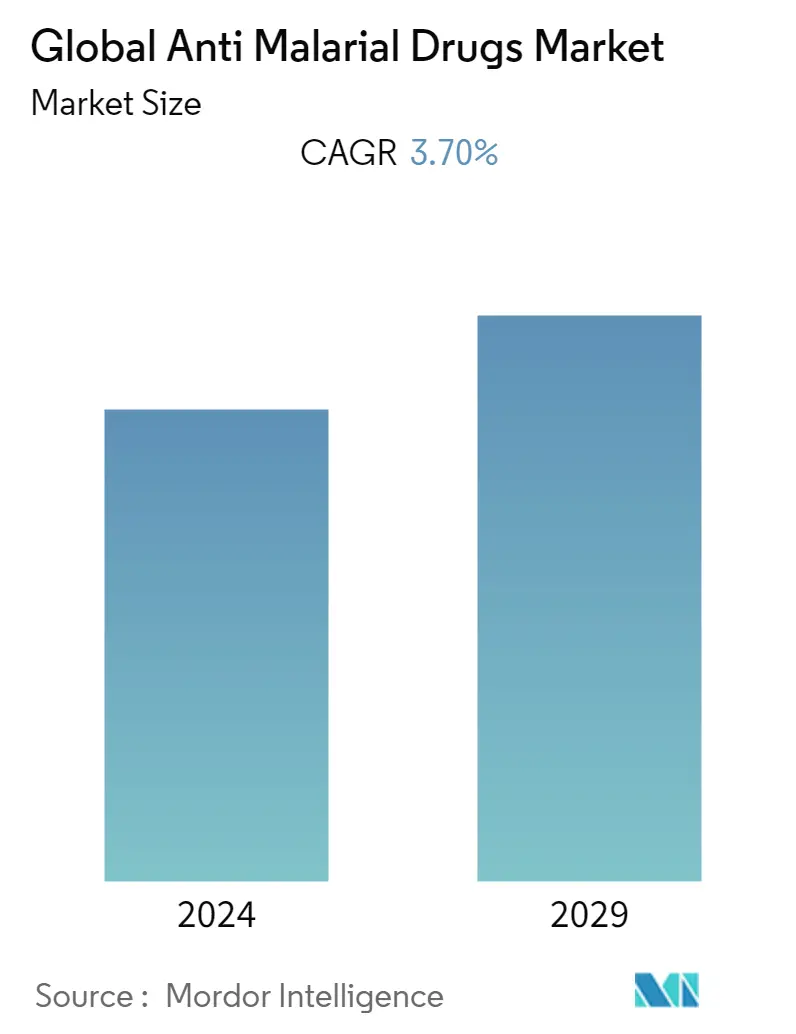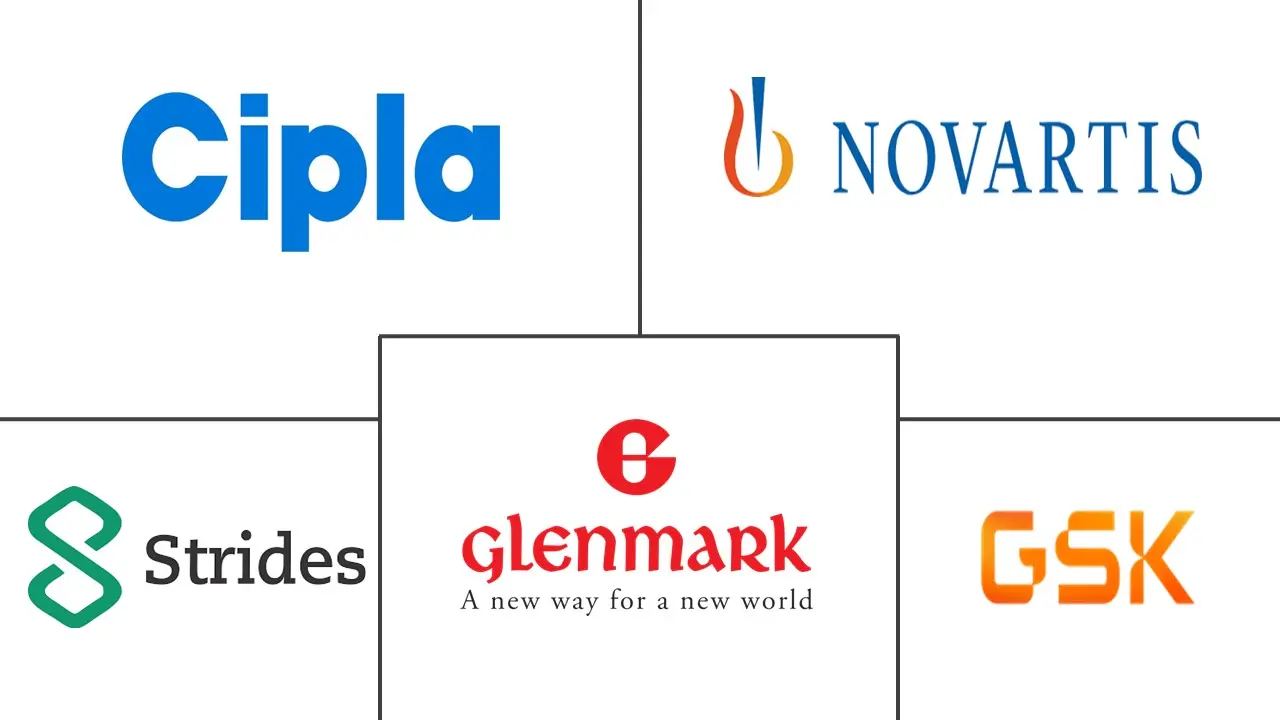Market Size of Global Anti Malarial Drugs Industry

| Study Period | 2019 - 2029 |
| Base Year For Estimation | 2023 |
| Forecast Data Period | 2024 - 2029 |
| CAGR | 3.70 % |
| Fastest Growing Market | Asia Pacific |
| Largest Market | Middle-East and Africa |
Major Players
*Disclaimer: Major Players sorted in no particular order |
Need a report that reflects how COVID-19 has impacted this market and its growth?
Anti Malarial Drugs Market Analysis
The Anti Malarial Drugs market is expected to register a CAGR of 3.7% over the forecast period (2022-2027).
COVID-19 has dramatically impacted the anti-malarial drugs market due to the rise in the adoption of anti-malarial drugs such as chloroquine and hydroxychloroquine in COVID-19 patients. For instance, according to the study titled 'Chloroquine and hydroxychloroquine in the treatment of COVID-19: the never-ending story' published in January 2021, the anti-malarial medications chloroquine (CQ) and hydroxychloroquine (HCQ) have been proposed as potential treatments for COVID-19 and as promising therapeutics against the novel coronavirus SARS-CoV-2. Therefore the repurposing of anti-malarial drugs for the treatment of COVID-19 has led to a dramatic rise in the adoption of anti-malarial therapies, driving the market growth during the pandemic.
The factors driving the growth of anti-malarial drugs include the high prevalence of malaria in developing and underdeveloped countries, increasing awareness initiatives undertaken by government, increasing research for new drugs and new combinations therapies, among others.
According to the 'World Malaria Report 2021' by World Health Organization (WHO), there were an estimated 228 million cases and nearly 602,000 malaria-related deaths in 2020. Hence, the high prevalence of malaria will lead to rise in adoption of anti malarial therapies, driving the growth of this market.
The other factors includes the increase in awareness initiatives by governments and research for new anti-malarial drugs and therapies are also helping this market grow. For instance, in December 2021, the United States Food and Drug Administration has approved orphan drug designation to the Cadila Healthcare's antimalarial drug ZY19489 (MMV253) currently in development together with Medicines for Malaria Venture (MMV). Furthermore, in March 2021, according to the news, Francis Crick Institute and the Latvian Institute of Organic Synthesis researchers have designed a drug-like compound which effectively blocks a critical step in the malaria parasite life cycle and are working to develop this compound into a potential first of its kind malaria treatment. The rise in research in the development of anti malarial drugs will lead to the entry of novel molecules for anti malarial therapy in the market, thereby lead to rise in adoption, driving the market growth.
Furthermore, in June 2021, according to the news, the government of Malawi launched 'Zero Malaria Starts with Me' campaign to end malaria by the year 2030, which is the main cause of death in Malawi and 15% of hospital admissions in Malawi are due to a parasitic ailment that is carried by mosquitoes.
However, side-effects of anti-malarial drugs and presence of counterfeit and substandard drugs are restraining the overall growth of this market.
